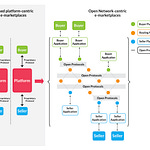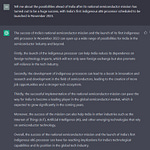Antariksh Matters #1: Dual-use Dilemmas in the OEWG on Space Threats
— Pranav R Satyanath
The first session of the Open-Ended Working Group (OEWG) on Reducing Space Threats was held last week between the 9th and 13th of May in Geneva. The OEWG was created under the requirement of the United Nations Resolution 75/36 which called on member states to exchange views on norms, threats and behaviours in outer space.
Deliberations on matters of space security are not new. They’ve been taking place under the framework of the Prevention of an Arms Race in Outer Space (PAROS), with countries divided between two broad themes: first, whether to regulate space capabilities or to regulate space activities; and second, whether to negotiate legally-binding treaties or whether to agree on non legally binding transparency and confidence-building measures.
The latest set of deliberations have attempted to focus on the norms, principles and behavioural guidelines that can be established in order to make space a secure environment for all countries. However, since space capabilities and space activities carried out by countries are intrinsically linked, and since space assets have both civilian and military applications, any attempt to regulate space activities will have both direct and indirect consequences on the interpretation of international law.
The dilemma of dual-use capabilities, was highlighted in a presentation made by David Koplow of Georgetown University, who pointed to the intersection of dual-use capabilities in space and the Law of Armed Conflict (LoAC). Koplow argues that by making it harder to distinguish civilian and military assets in space, countries may be violating a vital tenet of the LoAC. During an armed conflict, any asset of a country used for military purposes can be targeted by the adversary. Therefore, countries must separate their civilian and military assets to the greatest extent possible.
Making this distinction in practice is, however, a challenge as countries regularly use civilian assets for carrying out military activities. For example, civilian rockets are used to launch military satellites and the Global Positioning System (GPS) and similar systems are used for both civilian and military purposes. Some countries also use commercial Earth-imaging services for gathering intelligence on an adversary's military capabilities, making them potential targets during a conflict.
One possible solution to this problem was suggested by Almudena Azcárate Ortega, a researcher at the United Nations Institute of Disarmament Research (UNIDIR). Ortega proposed that countries could choose to distinguish their space capabilities into two categories:
Dual-use assets: Space capabilities that are designed to perform both civilian and military functions. GPS satellites and similar systems fall into this category.
Dual-capable assets: Space capabilities that perform civilian functions but that can be repurposed for military functions. Satellites used for debris removal or on-orbit servicing fall into this category.
Categorising space assets as dual-use or dual-purpose may indeed serve useful. However, some capabilities are more difficult to distinguish than others. For example, it is reported that Ukrainian forces are using Starlink satellites for assisting in drone strikes in Russia. Starlink is a space-based Internet service provided by the American company SpaceX. It is alleged that Russia attempted to cyberattacks on Starlink in order to prevent its use by Ukrainian forces.
As dual-use space technologies proliferate to more countries, the need for regulating both capabilities and activity will likely become a greater challenge for the international community.
Cyberpolitik: China's Position in OEWG (2021-2025) on Information Security
— Megha Pardhi
Between 28 March and 1 April 2022, the UN held the second substantive session of the "Open-ended Working Group on the Security of and the use of Information and Communications Technologies" (OEWG (2021-2025)). This is the second such working group constituted by the UN on information security. The OEWG (2021-2025) was formed in Nov 2020 and commenced in 2021. The final report of the working group will be presented to the UN General Assembly in 2025.
These working groups are the international community's attempts to shape norms governing cyberspace. Developing norms of behavior in cyberspace has been a contested issue for a long time. Russia was among the first countries to propose rules and norms on cyberspace. However, early attempts fell prey to geopolitical tug of war.
In the recently concluded session, many countries have put out statements expressing their position, suggestions, and concerns. In the statement released by the Chinese delegation, the Chinese government seems more worried about cyberspace norms being used against China or basically whoever does not fit into the US' definition of acceptability.
The Chinese delegation made four key points:
Maintaining peace in cyberspace is crucial. The division of cyberspace into peaceful and non-peaceful periods would send the wrong signal to the international community.
Security of cyberspace is necessary for all countries. The statement also has the usual rhetoric of abandoning 'Zero-sum thinking' and 'cold war' mentality.
First mover advantage in cyberspace should not be weaponized. China objected to the use of unilateral sanctions and weaponizing the first-mover advantage 'some countries' have over others.
The Chinese statement reflected that some countries are creating "deliberately creating closed, exclusive circles for discussing supply chain issues."
Objections over the division of activities in the peaceful and non-peaceful periods are understandable. Activities in cyberspace tend to intersect personal and state matters. Wars often blur this distinction. However, normalizing such division in cyberspace might set a dangerous precedent for the norms of behavior in cyberspace.
There is a veiled reference to the Quad in the statement. The reference to "closed, exclusive circles for discussing supply chain issues" is similar to the terminology used when Chinese leaders and foreign ministry spokespersons talk about Quad and AUKUS. This again reflects the fact that the Quad and AUKUS have got Beijing worried about similar groupings emerging in cyberspace. Beijing's fear of isolation might seem contradictory as China's own 'Great Firewall' has strived to separate Chinese cyberspace from the world. However, there is a difference between choosing to stay isolated and being forced to isolate. Currently, Beijing decides the rules of operation in China's cyberspace. If states form an alliance to isolate China in cyberspace, the rules would be different. The Chinese government understands it could be detrimental to China's long-term interests.
Additionally, the point of reference to the Quad and AUKUS is not just Beijing's fear of isolation. These references and the complaints of a 'cold war' mentality also mean China is trying to project itself as a norms follower while projecting others as 'arm twisting' bullies trying to get their own way. This is most evident in the fourth point of China's statement which roughly says, "this makes people doubt that the real goal of some countries participating in the UN information security process is to build 'international rules of cyberspace that other countries abide by, but they are above all countries’" (这令人不得不怀疑,某些国家参与联合国信息安全进程的真实目标是,构建 "其他各国都遵守,而其自身则凌驾于各国的网络空间国际规则").
The war in Ukraine also loomed over the second session of the OEWG (2021-2025). Some states expressed concerns over the way Ukraine War will shape behavior in cyberspace and objections and statements over cyber activities during the war. China's objection to the use of unilateral sanctions and weaponizing first-mover advantage by 'some countries' most likely refers to the sanctions imposed by US and allies on Russia. Again, Chinese leaders have used similar terminology to express their displeasure over sanctions on Russia.
Antariksh Matters #2: How Adversaries Might Challenge India’s Use of Space
— Aditya Ramanathan
Sceptics sometimes ask me how, in fact, India’s space assets could be threatened in the future and what forms such threats could take. It’s true that it’s hard to envisage what such attacks might look like. Our understanding of space warfare is limited by a merciful lack of precedence.
Limited as our understanding may be, it’s worth trying to think of the conditions under which India’s chief adversaries, China and Pakistan, might use space warfare capabilities against it. Broadly, India could face space warfare under three types of circumstances: peacetime (meaning the absence of unusual tensions), crisis (a spike in tensions and/or standoffs, skirmishes) or conflict (a state of violent hostilities in one or more theatres).
In the table below, I attempt to map the tools of space warfare to the circumstances India is likely to face.
Peacetime
In peacetime, adversaries will focus on demonstrating capabilities, probing defences, mounting disruptive cyber attacks, and infiltrating computer worms and viruses. Demonstrations of capabilities can help an adversary deter future threats. These could include ‘dazzling’ satellites with lasers, electronic jamming or spoofing, or conducting non-kinetic rendezvous and proximity operations around a satellite.
Crises
In crises, adversaries will primarily want to signal not just the existence of a capability but also the resolve to use it imminently if its demands are not met. Therefore, while an RPO craft circling around a satellite in peacetime is mainly a demonstration of capability, in a crisis, it is a coercive act meant to shape the outcomes of high stakes bargaining.
Conflict
In conflict, the tools of space warfare will most likely be used for effect – to actively deny the use of space and consequently degrade the effectiveness of the adversary’s Earth-based forces. An adversary could strike in six ways during a conflict:
A splendid first strike could deny India the effective use of space. Such a strike, usually carried out at the outset of a conflict (the frequently discussed ‘space Pearl Harbor’), would probably be part of a broader plan to degrade Indian forces with simultaneous strikes in space and on Earth.
A graduated response would involve managing an exchange of blows and seeking to end it on favourable terms. This would entail targeting specific space capabilities in retaliation and attempting to dissuade the other side from further action.
A focused strike targets specific capabilities for a finite set of time in a bid to degrade specific Earth-based capabilities. An Indian strike on Chinese ISR satellites over the Indian Ocean is an example of such a strike.
Disruptive strikes create uncertainty about the reliability of space assets. These are low grade, seemingly random strikes that force the state under attack to continually react rather than seize the initiative.
Disproportionate retaliation occurs in response to a smaller strike and is meant to dissuade the adversary from launching further attacks. Disproportionate retaliation must remain partial or temporary to provide the adversary an incentive to halt space warfare.
A catalytic strike seeks to precipitate third party intervention in a conflict and force its termination on the best terms available. The American political scientist Vipin Narang argues that Pakistan has, in the past, used the catalytic threat of nuclear strikes to hasten American intervention in crises with India. A kinetic attack from a future Pakistani ASAT missile could catalyse frantic calls for ending a conflict that is tilting in India’s favour.
To be clear, none of these types of strikes falls into discrete or self-contained categories. A focused strike can lead to a graduated response, which can, in turn, devolve into disruptive strikes or escalate into disproportionate retaliation. These categories are simply meant to clarify the likely intent behind the waging of space warfare.
There are reasons for the aforementioned sceptics to be, well, sceptical about the value of an exercise such as this. In the real world, any target state would find it difficult to accurately gauge an adversary’s intentions while an attack is underway. Also, future contingencies are likely to take unexpected forms and contain surprises. However, the value of this sort of undertaking is that it can (a) help clarify the sort of situations that can trigger an attack on space assets, (b) provide clarity on the sort of challenges India will need to deter in the coming years. As the much-used adage goes, plans are useless but planning is indispensable.
Siliconpolitik: The Transatlantic Semiconductor Alliance in the Making
— Pranay Kotasthane
(First published on takshashila.org.in)
Over the last couple of years, we have consistently argued that in order to make the semiconductor supply chain resilient, plurilateral cooperation is a necessity, not a choice. Subsidising semiconductor firms in the hope of achieving national self-sufficiency is counterproductive and futile. Futile in the limited sense that such measures won’t achieve the aim of full indigenisation. Counterproductive because a sole focus on domestic subsidies would displace the opportunity to really make a resilient, China-independent, cutting-edge semiconductor supply chain.
Nevertheless, as it so often happens, subsidies are an easier policy option. This pro-business instrument—as against a pro-market one—also suits semiconductor firms better. Subsidies finance their heavy capital investments in the short term. And so, we had a number of national governments—the US, the EU, Japan, South Korea, China, India, and Taiwan to name a few—launch their own versions of semiconductor subsidy programmes.
However, it does seem that the tide is now turning from a public and foreign policy perspective. Apart from subsidies, governments are now realising the value of coordinating their efforts. In an earlier post, I had discussed a reported semiconductor alliance involving the US, Japan, South Korea, and Taiwan. Although we haven’t heard about this grouping since then, there is now a new grouping that we need to take note of.
The US and EU announced a new initiative on similar lines as part of the US-EU Trade and Technology Council (TTC) that concluded in Paris on Monday, 16th May. The detailed joint statement shows that the scope of this transatlantic partnership on technology is vast. Initiatives were announced on areas as diverse as solar supply chains, climate and cleantech, rare earth materials, technology standards and semiconductors. For this post, let’s focus on understanding what the announcements on semiconductors mean to the US, the EU, and India.
The Transatlantic Approach for Semiconductors
As part of the initiative, the two parties agreed on two key areas:
That the US and the EU will coordinate their respective chip investments so that it doesn’t end up being a ‘subsidy race’ to the bottom. In practice, this means that the US and EU are likely to share information with each other on their planned fab investments, the companies they plan to target, and so on. In ideal circumstances, they would like to reach a stage where the EU has enough production capacity for automotive chips, while the US invests in production capacity for leading-edge nodes. In the future, the two partners would also want to agree on preferential treatment for their own fabless companies to access the fabs in each other’s national jurisdiction. For now, they have agreed on consulting each other on subsidies for semiconductor firms.
The two partners also agreed to develop an early warning detection system for supply chain disruptions. A similar announcement was also made as part of the Quad Semiconductor Supply Chain initiative during the last Summit meeting, where the four members agreed to “map capacity, identify vulnerabilities, and bolster supply-chain security for semiconductors and their vital components.” The motivation for this initiative is to keep a closer eye on wafer capacities across the globe so that stockpiling or additional capacity addition can be coordinated.
Both the moves indicate the willingness to collaborate with partners instead of going it all alone.
The India Angle
These moves are consequential for India. Apart from the US, the EU has a Trade and Technology Council arrangement with just one other nation-state—India. India should use this arrangement and become a part of this semiconductor supply chain alliance. There’s also the opportunity to combine the US-EU effort with the Quad’s Semiconductor Supply Chain Initiative, as the goals of the two mechanisms are identical.
With these new semiconductor alliances taking shape, it’s important for India to become a part of these formations. Foreign Policy in the Information Age needs to go beyond the traditional defensive approach of ‘protecting’ one’s critical technologies and instead become a key driver for enhancing India’s high-tech power.
Our Reading Menu
[Article] Why Drones Have Not Revolutionized War: The Enduring Hider-Finder Competition in Air Warfare by Antonio Calcara, Andrea Gilli, Mauro Gilli, Raffaele Marchetti, Ivan Zaccagnini
[Book] The Atlas of AI: Power, Politics, and the Planetary Costs of Artificial Intelligence by Kate Crawford












Share this post